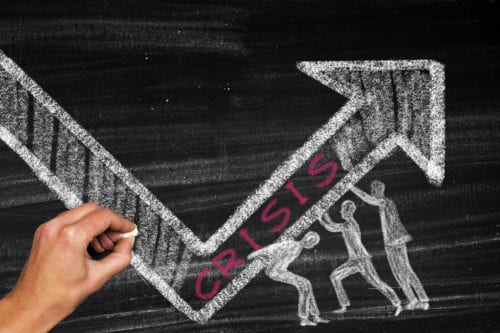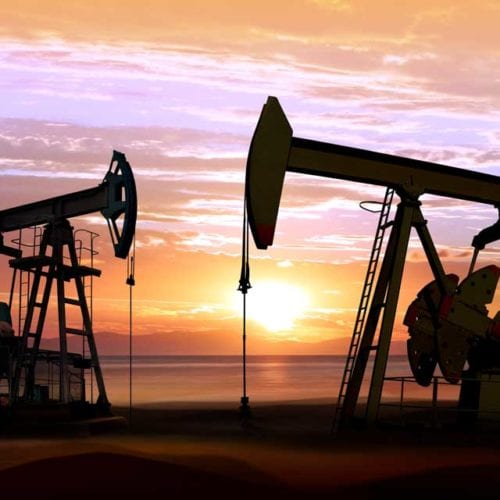Crisis Management, Teamwork concept

Stimulus and Response
For many Americans—workers, families, and business owners—the relief offered by the recent $2 trillion Coronavirus Aid, Relief, and Economic Security (CARES) Act won’t come a day too soon. The bill has been called an economic stimulus, and while it will stimulate the economy, it is more disaster relief.
Chiefly, it provides necessary liquidity at a time when many businesses have been shuttered with limited warning, as well as measures to help employers keep their workers on the payroll and a big boost to unemployment for those who have already lost their jobs.
The bill also includes a $454 billion Federal Reserve Loan Program for businesses affected by the crisis, as well as around $78 billion specifically for the aviation industry and its workers. With the current administration’s fondness for fossil fuels, we can count it as a win that the oil and gas industry—which was already reeling from an unrelated plunge in oil prices—was not also singled out for support.
Rocky Mountain Institute was also encouraged to see $25 billion for transit agencies, which was intended to maintain service and make up for lost revenues. But all of this is icing on the cake; the most important thing at this point is saving businesses from going under and helping Americans meet immediate needs.
Falling Through the Cracks
With a price tag of $2 trillion, this is the largest single economic relief bill ever passed by the US Congress. However, it is likely that it still is not enough to respond to the economic fallout of this crisis, which has ground many forms of commerce to a halt and had already wiped out more than $5 trillion in market capitalization of publicly traded companies by March 9.
And while the use of direct payments to most Americans is a novel move for the US federal government, many with limited cash and access to credit, such as freelancers or those who were laid off from affected industries such as hospitality, could have a hard time making ends meet until payment arrives.
Yesterday rent was due for around 50 million Americans, and some may not be able to pay it. And while some states have put moratoriums on evictions, others have not, which could make for a new homeless crisis.
And workers in some industries—like retail, oil and gas, and coal—were already facing challenging times due to non-COVID crises, including the rise of online shopping, a global oil price war, and the declining competitiveness of coal. Those jobs may not come back even after this crisis abates.
Next Steps
While the recent relief measure is often referred to as “the stimulus bill,” it is actually the third piece of legislation that has been signed to provide relief to the American economy. Before the ink was even dry on the CARES Act, House Speaker Nancy Pelosi was already talking about a fourth stimulus package. And while Senate Majority Leader Mitch McConnell has tried to throw cold water on that idea, leadership in both houses of Congress is in talks about an infrastructure bill, upon which President Trump has put another $2 trillion price tag.
This next bill is likely to address longer-term concerns. As the new epicenter of the COVID-19 pandemic, this crisis has laid bare our underinvestment as a nation in our public health and health care infrastructure. But this isn’t the only crisis we’ve been underinvesting in infrastructure to prepare for. Our safety net for workers and communities caught in failing industries is woefully underfunded, we are failing to prepare adequately to avert climate change, failing to protect 100 million of our citizens from dangerous levels of air pollution, and seeing inequality rise unchecked across the country.
We at Rocky Mountain Institute have already produced a series of recommendations for new stimulus and recovery measures, which we are sharing with advocates and thought leaders. While these recommendations span many industries and sectors, they rest on a common set of principles. Chiefly, in future stimulus and recovery measures we see an opportunity not only to put people back to work and stabilize the economy, but also to simultaneously advance a clean energy future instead of bailing out the dirty industries of the past.
We must also consider other objectives, including ensuring that stimulus and recovery measures not only avoid exacerbating existing inequality but also support those communities that are being particularly hard hit by this crisis. And we see an opportunity for measures to invest in the needed private and public infrastructure to avert the crises of the future.
For instance, measures to incentivize fossil fuel industries already in the midst of a crisis to decarbonize and clean up polluted lands and waterways could help avert two future crises— reducing the risk of dangerous climate change while also giving fossil fuel workers and communities already facing an uncertain future the opportunity to build a new, better one.
In short, we must not only build back from this crisis, but we must build back better. And in the next blog posts in this series, we will provide more concrete examples of what we envision.


